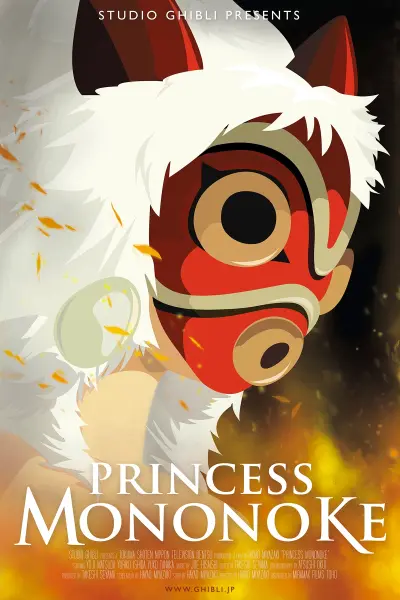
"Princess Mononoke," directed by the acclaimed Hayao Miyazaki, is a masterful animated film set during the late Muromachi period in Japan (approximately 1336 to 1573 AD). The film skillfully blends historical elements with fantasy, presenting a narrative centered around Ashitaka, a young Emishi prince. He finds himself embroiled in a conflict that highlights the tense relationship between the gods of the forest and the humans exploiting its resources. This story serves as a powerful medium to explore significant themes such as environmentalism, the interplay between human civilization and nature, and the intricate dynamics of societal development.
The film commences with an Emishi village besieged by a demon. Ashitaka, in an act of defense, slays the demon but is cursed, gaining supernatural strength at the cost of his own life. The demon, a boar god tainted by human influence, marks the beginning of Ashitaka's quest for a cure and a deeper understanding of the underlying conflict between humans and nature.
Ashitaka's quest leads him to Iron Town, overseen by Lady Eboshi. Eboshi epitomizes the human desire for progress and development, often at the expense of the natural world. Iron Town represents the zenith of human industrialization, juxtaposed against the neighboring forest, the realm of animal gods and San, also known as Princess Mononoke. Raised by the wolf god Moro, San symbolizes the wild and unyielding aspect of nature, vehemently resisting the human intrusion led by Eboshi.
The film's narrative intensifies as Ashitaka endeavors to mediate between these opposing forces. His encounters with San and Lady Eboshi bring into sharp focus the delicate equilibrium and resulting conflict between human advancement and the preservation of the environment. The story reaches its zenith in a climactic battle involving a boar god clan, Lady Eboshi's ambition to annihilate the Great Forest Spirit, and Ashitaka's desperate efforts to avert a dire consequence. This fictional battle mirrors real-world issues concerning environmental conservation and societal challenges.
At its essence, "Princess Mononoke" challenges the simplistic dichotomy of good versus evil. The film presents characters with complex motivations, both noble and flawed. For example, Lady Eboshi, while intent on destroying the forest, also provides sanctuary and equality to the marginalized in Iron Town. Conversely, San, in her defense of the forest, engages in morally complex actions. This duality is pivotal to the film's thematic exploration, underscoring the complexities of human-nature relationships and the ethical quandaries inherent in the pursuit of progress.
Furthermore, the film is imbued with the theme of lost innocence, reflecting Miyazaki's contemplation on the stark realities of the world, including the impacts of wars and societal upheaval. This theme is manifested through the evolution of characters and the environments they inhabit, illustrating the loss of innocence amid unrelenting change and the stark realities of existence.
In summary, "Princess Mononoke" transcends the boundaries of a typical animated feature. It is a profound exploration of the frictions between human civilization and the natural world, the moral intricacies within these conflicts, and the loss of innocence amidst such struggles. Its rich narrative, multifaceted characters, and thematic depth establish it as a seminal work in animated cinema, offering profound insights into environmentalism, societal progression, and the human condition.

